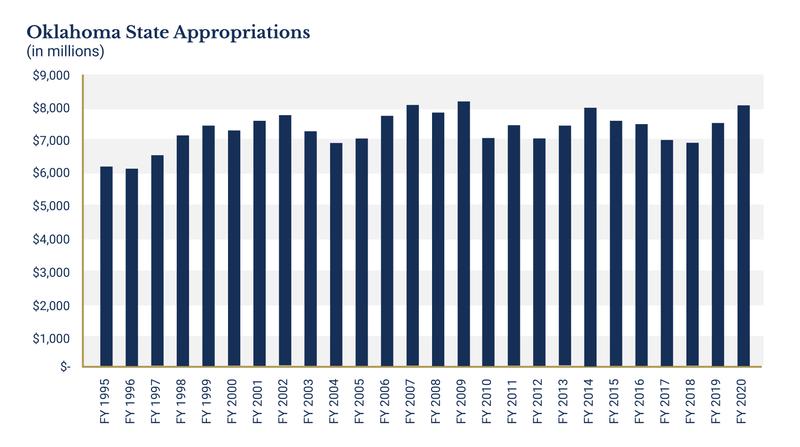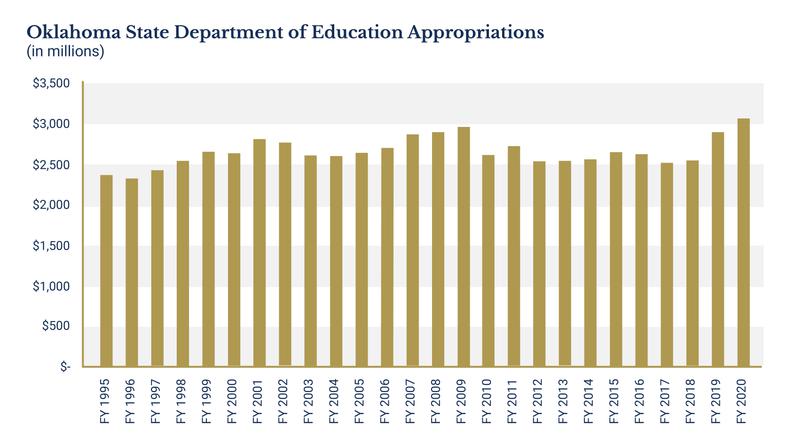
Budget & Tax
New budget hits near record high
May 28, 2019
Curtis Shelton
The new budget signed by Gov. Kevin Stitt last week creates a near record high in appropriated funding for state agencies.
The budget provides $8.3 billion including $200 million, 2 percent of the total, to the state’s rainy day fund. This leaves $8.1 billion left in funding for state agencies. The $8.1 billion appropriated budget is a $555 million, or 7.36 percent, increase compared to last year.
Over the last two years state appropriations have grown by $1.2 billion, a 17 percent increase, the largest two-year increase in the last 25 years.

Source: Oklahoma Comprehensive Annual Financial Reports, various years; 2018 Oklahoma Comprehensive Annual Financial Report
This near record-setting budget comes after two years of robust economic growth. The state has experienced 24 months of revenue growth and has set records month after month for revenue collections.
This increased revenue has allowed the legislature to raise common education funding by $157.7 million. After last year’s $465 million increase and this year’s $157.7 million increase, common education appropriations are set to exceed $3 billion for the first time ever.
Over the last two years common education funding has grown by 20 percent, the largest two-year increase in the last 25 years.

Source: Oklahoma Comprehensive Annual Financial Reports, various years; 2018 Oklahoma Comprehensive Annual Financial Report
While lawmakers increased funding across the board, they also made the decision to place $200 million into the state’s savings account.
During the statewide recession that began in 2015, the state’s savings account was severely depleted. The account was so depleted it was one of the factors cited by Standard & Poor’s (S&P) for downgrading Oklahoma’s credit rating in 2017. This S&P rating was used by tax advocates to push for large tax increases. From 2015 until 2018 the legislature passed an estimated $1.1 billion in increased tax and revenue measures.
These same advocates are now criticizing the decision to increase savings. They would rather see the state use all the money now and worry about potential revenue declines later. Having an adequately funded rainy-day fund is important for any state, but even more so for a state like Oklahoma, whose heavy reliance on the volatile energy industry means that economic swings can happen every few years.
This bit of fiscal prudence shown by policymakers (in an otherwise eye-popping budget) will prove beneficial for Oklahomans in future downturns.